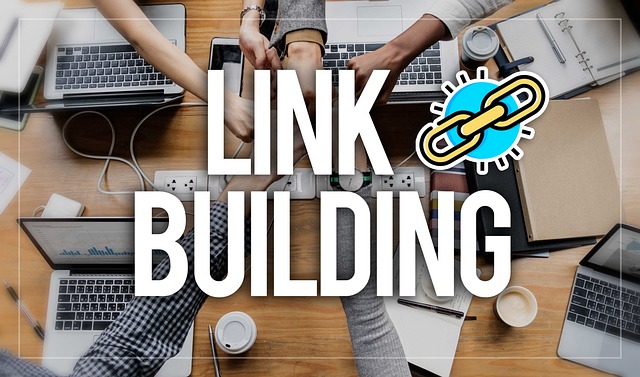In the dynamic world of search engine optimization (SEO), broken link building has emerged as a powerful strategy for enhancing your website’s visibility and authority. This technique involves identifying broken links on other websites, contacting the site owners, and suggesting your own content as a replacement.
By doing so, you not only help the site owner fix their broken links but also earn valuable backlinks to your own site. This comprehensive guide will delve into the intricacies of broken link building and provide actionable steps to effectively implement this strategy.

What Are Broken Links?
Broken links, also known as dead links, are hyperlinks that no longer work. They may lead to a 404 error page, an unavailable domain, or a deleted page. Broken links can harm user experience and negatively impact a website’s SEO. Search engines consider the presence of broken links as a sign of poor maintenance and may reduce the ranking of a site that contains many of them.
Why Broken Link Building Works
Broken link building leverages the need for webmasters to maintain the quality and usability of their sites. By offering a replacement for a broken link, you provide a solution to a problem they may not even be aware of. This creates a win-win situation: the website owner gets a functional link, and you earn a backlink to your content, which can improve your site’s SEO.
The Benefits of Broken Link Building
- Improved SEO Ranking: Backlinks are a critical factor in search engine ranking algorithms. High-quality backlinks from authoritative sites can significantly boost your SEO performance.
- Increased Traffic: By obtaining backlinks from relevant websites, you can drive more targeted traffic to your site.
- Enhanced Authority: Gaining links from reputable websites helps establish your site as an authority in your niche.
- Building Relationships: Reaching out to webmasters can open doors for future collaborations and networking opportunities.
Step-by-Step Guide to Broken Link Building

Step 1: Identify Relevant Websites
The first step in broken link building is to identify websites that are relevant to your niche. These should be authoritative sites where you would like to earn backlinks. Here are a few methods to find such sites:
- Competitor Analysis: Use tools like Ahrefs, SEMrush, or Moz to analyze your competitors’ backlinks. Look for broken links among these and consider the websites as potential targets.
- Industry Blogs and Resources: Identify popular blogs, resource pages, and directories within your industry.
Step 2: Find Broken Links
Once you have a list of target websites, the next step is to find broken links on these sites. There are several tools and techniques you can use:
- Broken Link Checker Tools: Tools like Ahrefs’ Broken Link Checker, Screaming Frog, and Dead Link Checker can help you identify broken links on a website.
- Manual Checking: You can manually check for broken links by browsing through the target website and clicking on hyperlinks to see if they lead to 404 error pages.
Step 3: Create or Identify Replacement Content
After identifying broken links, you need to find or create content on your site that is relevant and can serve as a suitable replacement. This content should be high-quality, informative, and relevant to the topic of the broken link. If you don’t have existing content that fits, consider creating a new piece specifically for this purpose.
Step 4: Reach Out to Website Owners
With a list of broken links and suitable replacement content, the next step is to contact the website owners. Craft a personalized email that highlights the following points:
- Introduce Yourself: Briefly introduce yourself and your website.
- Highlight the Broken Link: Inform the site owner about the broken link on their site. Be specific about its location.
- Suggest Your Content: Offer your content as a replacement for the broken link. Explain why it is a suitable replacement and how it can benefit their readers.
- Keep It Friendly and Professional: Be polite and respectful in your communication. Avoid being overly promotional.
Step 5: Follow Up
If you don’t receive a response within a week or two, consider sending a follow-up email. Sometimes, emails get lost or overlooked, and a gentle reminder can increase your chances of getting a positive response. However, avoid being pushy or sending multiple follow-ups, as this can be perceived as spammy.
Step 6: Monitor Your Backlinks
Once you start earning backlinks, it’s essential to monitor them to ensure they remain active and beneficial to your SEO efforts. Tools like Ahrefs, SEMrush, and Moz can help you track your backlinks and alert you if any of them become broken or lost.
Tips for Successful Broken Link Building
- Quality Over Quantity: Focus on earning high-quality backlinks from authoritative websites rather than a large number of low-quality links.
- Personalize Your Outreach: Tailor your outreach emails to each website owner. Generic or templated emails are less likely to get a positive response.
- Be Helpful: Emphasize the value you are providing to the website owner by pointing out broken links and offering suitable replacements.
- Build Relationships: Use broken link building as an opportunity to build long-term relationships with other webmasters and influencers in your niche.
- Stay Organized: Keep track of your outreach efforts, including which websites you’ve contacted, the status of each outreach, and any responses you receive.
Tools for Broken Link Building
Several tools can streamline the broken link-building process:
- Ahrefs: A comprehensive SEO tool that includes a broken link checker, backlink analysis, and outreach capabilities.
- SEMrush: Another powerful SEO tool with features for finding broken links and analyzing competitor backlinks.
- Screaming Frog: A website crawler that can help identify broken links on your target sites.
- Dead Link Checker: A simple tool for finding broken links on any website.
- Hunter.io: A tool for finding email addresses of website owners, making outreach easier.
Common Challenges and How to Overcome Them
Finding Suitable Replacement Content
Creating or finding relevant content to replace broken links can be challenging, especially if the original link is pointed to a very specific or unique resource. To overcome this, consider creating comprehensive, evergreen content that covers a broad range of related topics.
Low Response Rate
Not all website owners will respond to your outreach efforts. To improve your response rate, ensure your emails are personalized and concise, and highlight the benefits to the website owner. Following up politely can also help increase your chances of getting a response.
Maintaining Quality
As you scale your broken link-building efforts, maintaining the quality of your outreach and content is crucial. Avoid the temptation to use generic templates or low-quality content, as this can harm your reputation and SEO efforts.
Real-World Examples of Successful Broken Link Building
Example 1: HubSpot
HubSpot, a leading inbound marketing platform, successfully used broken link building to improve its SEO. By identifying broken links on high-authority marketing blogs and offering their high-quality content as replacements, HubSpot earned numerous valuable backlinks. This strategy contributed to a significant increase in their organic search traffic and domain authority.
Example 2: Backlinko
Brian Dean of Backlinko is another notable example. He used broken link building to gain backlinks from authoritative sites in the SEO and digital marketing niche. By providing valuable, in-depth content as replacements for broken links, he was able to boost his site’s rankings and establish himself as an authority in the industry.
Conclusion
Broken link building is a powerful and effective strategy for improving your website’s SEO. By identifying broken links on relevant websites, creating valuable replacement content, and reaching out to website owners, you can earn high-quality backlinks that boost your site’s visibility and authority.
Remember to focus on quality, personalize your outreach, and build long-term relationships with webmasters in your niche. With persistence and the right approach, broken link building can become a cornerstone of your SEO strategy, driving sustained growth and success for your website.


